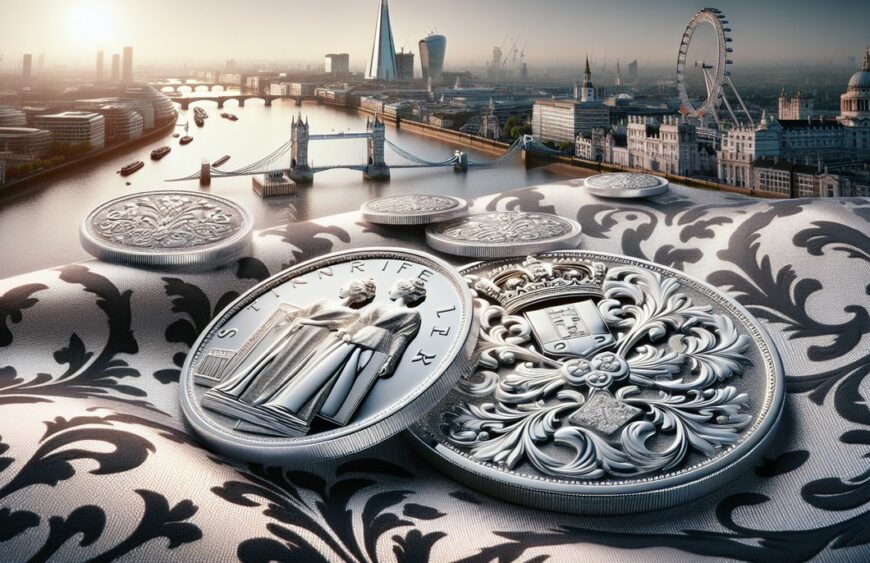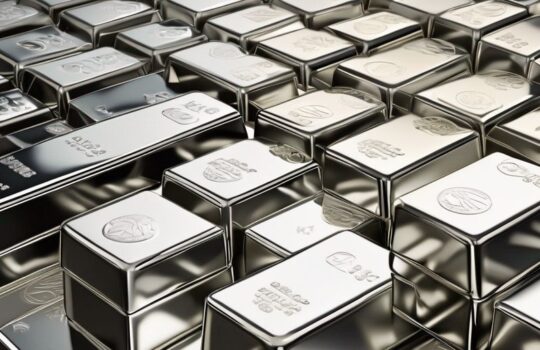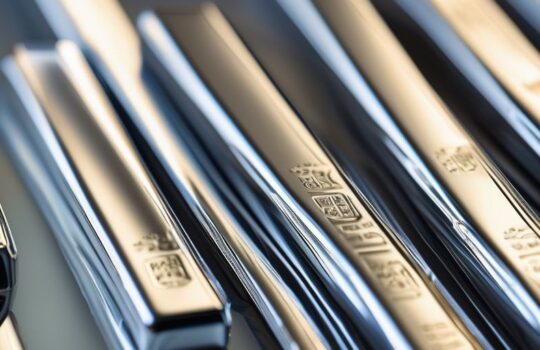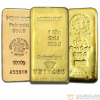Sterling Investments: The Ins and Outs of Investing in Silver for Britons

Investing in silver can be a lucrative opportunity for Britons looking to diversify their investment portfolio. With its historical significance, industrial demand, and role as an inflation hedge, silver offers unique benefits to investors. However, before diving into silver investments, it is essential to consider various factors such as market volatility, storage options, and tax implications. By implementing strategies like dollar-cost averaging, diversification, and monitoring market trends, Britons can make informed decisions and maximise their returns from silver investments.
Key Takeaways
- Silver is a reliable inflation hedge.
- Diversification is key to mitigating risks in silver investments.
- Monitor market trends regularly for informed decision-making.
- Consider storage options and tax implications when investing in silver.
- Implementing dollar-cost averaging can help reduce the impact of market volatility on silver investments.
Why Silver is a Solid Investment Choice
Historical Significance
We’ve long cherished silver for its lustrous beauty and malleability, but its role extends far beyond mere ornamentation. Silver has been a cornerstone of commerce and currency for millennia, underpinning economies and facilitating trade across empires. Its value is not just monetary; silver’s historical significance is deeply woven into the fabric of our past.
In Britain, our relationship with silver is particularly storied. The Pound Sterling, once equivalent to a pound of sterling silver, is a testament to the metal’s enduring legacy in our financial system. This intrinsic link between silver and currency has afforded the metal a special place in the hearts of investors.
While the days of silver coins clinking in our pockets are largely behind us, the allure of silver as an investment remains undiminished.
Understanding the historical context of silver can provide us with valuable insights into its potential future performance. Here’s a brief overview of silver’s role through the ages:
- The Roman Empire used silver to mint coins, establishing its role as a medium of exchange.
- During the Middle Ages, silver mines in Europe contributed to local and regional economic growth.
- The discovery of the New World led to an influx of silver, which had profound effects on global trade and finance.
By appreciating the depth of silver’s historical roots, we can better grasp why it continues to be a sought-after asset in modern portfolios.
Industrial Demand
We must recognise the significant role that silver plays in various industries. Its unique properties, such as high electrical conductivity, thermal conductivity, and reflectivity, make it an indispensable material in many sectors. The industrial demand for silver is a strong driver of its value, and it’s not just limited to traditional uses like jewellery or silverware.
Electronics, solar panels, and medical applications are just a few areas where silver is irreplaceable. This demand is expected to grow as technological advancements continue. Here’s a snapshot of silver’s industrial applications:
- Electronics: Circuit boards, switches, and contacts
- Energy: Solar panels and nuclear reactors
- Medicine: Antibacterial coatings and medical devices
The versatility of silver in industrial applications underpins its investment appeal. Its usage spans a broad spectrum of cutting-edge technologies, ensuring its relevance and demand remain robust.
As investors, we should be mindful of the trends in these industries, as they can significantly impact the price and availability of silver. Keeping an eye on industrial growth can provide valuable insights into the potential future performance of our silver investments.
Inflation Hedge
In the face of inflation, we often seek assets that maintain or increase in value over time. Silver has historically served as an effective hedge against inflation, preserving purchasing power as the cost of living rises. Unlike paper currencies that can be printed at will, silver’s supply is limited, which helps it retain value.
Silver is not just a precious metal; it’s a commodity that stands the test of time. When inflation rates climb, the value of silver typically moves in tandem, providing a safeguard for our investments. Consider the following points:
- Silver has intrinsic value and is less volatile than other commodities.
- It’s a tangible asset that can be stored and held in physical form.
- Silver investments can be liquidated relatively easily, offering flexibility in times of need.
We must remember that while silver can protect against inflation, it should be part of a diversified investment strategy to mitigate risks associated with market fluctuations.
Factors to Consider Before Investing in Silver
Market Volatility
When we consider investing in silver, we must acknowledge the inherent market volatility that comes with precious metals. Silver prices can fluctuate widely, often influenced by global economic conditions, geopolitical events, and currency strength. It’s crucial for us to stay informed and not be swayed by short-term market movements.
While we aim for long-term gains, short-term volatility should be seen as a natural aspect of the silver market, not a deterrent.
Understanding the factors that affect silver prices can help us make more informed decisions. Here’s a list of key influences on silver market volatility:
- Economic indicators (e.g., employment rates, GDP growth)
- Central bank policies
- Geopolitical tensions
- Technological advancements in industries that use silver
Just as a guide on finding the best price for a 1 oz Gold Bar in the UK considers various factors like purity and seller reputation, we too must consider similar aspects when dealing with silver. Market conditions and buying options are equally important for us to get the best possible deal.
Storage Options
When we delve into the realm of silver investments, we must consider the practicalities of storage. Securing your silver is paramount, whether you opt for a home safe, a bank deposit box, or professional storage facilities. Each option comes with its own set of considerations regarding cost, accessibility, and security.
Home storage may seem convenient, but it can pose significant risks. Theft, damage, or loss are potential concerns that must not be overlooked. On the other hand, bank deposit boxes offer enhanced security but can be less accessible and come with rental fees. Professional storage solutions, while potentially more expensive, provide the highest level of security and often include insurance.
- Home Safe
- Pros: Immediate access, no ongoing costs
- Cons: Risk of theft, no insurance
- Bank Deposit Box
- Pros: Increased security, some insurance options
- Cons: Rental fees, limited access
- Professional Storage
- Pros: Maximum security, fully insured
- Cons: Higher costs, less personal control
We should always weigh the balance between cost-effectiveness and security. The right choice will depend on individual circumstances and investment scale.
For a comprehensive understanding of storage solutions, types, and regulations, the article titled ‘All You Need To Know About Storing Silver‘ on PhysicalGold.com is an invaluable resource. It’s perfect for both seasoned investors and those new to the silver market.
Tax Implications
When we consider the tax implications of investing in silver, it’s crucial to understand the nuances of taxation in the UK. Silver is subject to VAT, which currently stands at 20%. This can significantly affect the overall cost of your investment, especially when purchasing physical silver.
However, there are certain silver investment products that are exempt from VAT. For example, silver coins that qualify as legal tender in the UK, such as the Silver Britannia, are not subject to this tax. It’s important to research and verify the tax status of any silver product before making a purchase.
Remember, the tax implications can vary depending on how you bring silver into the country or how you store it. Always consult with a tax professional to ensure compliance with UK tax laws.
Here’s a quick overview of the types of silver investments and their associated tax considerations:
- Physical silver (bars, coins, etc.): Subject to 20% VAT unless classified as legal tender.
- Silver ETFs and ETCs: Generally not subject to VAT, but other taxes like Capital Gains Tax may apply.
- Silver mining stocks: Subject to Capital Gains Tax and possibly Income Tax on dividends.
Strategies for Successful Silver Investments
Dollar-Cost Averaging
We’ve often found that the key to building a robust silver portfolio is consistency. Dollar-cost averaging (DCA) is a strategy we employ to smooth out the price volatility inherent in the silver market. By investing a fixed sum of money at regular intervals, we purchase more silver when prices are low and less when prices are high, thus averaging the cost over time.
Silver bullion is a popular choice for DCA, as it allows for direct investment in physical silver. Here’s a simple breakdown of how we might structure our DCA approach:
- Determine the total amount we wish to invest in silver.
- Decide on a fixed amount to invest at each interval (e.g., monthly).
- Set a schedule and stick to it, regardless of market conditions.
By adhering to a disciplined investment schedule, we mitigate the risk of emotional decision-making and potentially benefit from buying opportunities during market dips.
It’s crucial to remember that while DCA can help reduce the impact of volatility, it does not guarantee a profit or protect against loss in declining markets. However, it does provide a systematic approach to building our investment over time.
Diversification
In our pursuit of a robust investment portfolio, we recognise the importance of diversification. By spreading our investments across various asset classes, we can mitigate risk and potentially enhance returns. Silver, with its unique position in the market, can play a pivotal role in this strategy. Unlike other commodities, silver’s performance often correlates poorly with traditional assets like stocks and bonds, providing a cushion against market downturns.
When we include silver in our portfolio, we’re not just adding a precious metal; we’re incorporating an asset with its own set of supply and demand dynamics. This can be particularly beneficial during times of economic uncertainty or when other sectors are underperforming.
It’s essential to understand that diversification is not about eliminating risk entirely, but about managing it in a way that aligns with our investment goals and risk tolerance.
To illustrate the concept of diversification with silver, consider the following table showing a hypothetical asset allocation:
| Asset Class | Percentage |
|---|---|
| Equities | 50% |
| Bonds | 20% |
| Real Estate | 15% |
| Silver | 10% |
| Cash | 5% |
This table is a simplified example, but it underscores the value of including silver as part of a diversified investment approach. By doing so, we can potentially smooth out the volatility inherent in individual asset classes and pursue a more stable growth trajectory over the long term.
Monitoring Market Trends
In our journey to make the most of our silver investments, keeping a vigilant eye on market trends is crucial. By understanding the ebb and flow of the market, we can make informed decisions that align with our investment goals.
Silver prices can be influenced by a myriad of factors, from geopolitical events to shifts in the industrial sector. It’s essential to stay updated with the latest news and analyses that could impact the market. Here’s a simple list to help us stay on track:
- Regularly check silver price indices.
- Follow financial news and updates from reputable sources.
- Analyse historical price charts for patterns.
- Attend webinars and workshops on precious metal investments.
By dedicating time each week to review and analyse the current market conditions, we can anticipate potential changes and adjust our strategies accordingly.
Ultimately, our success in silver investing hinges on our ability to adapt to market changes. This proactive approach will help us safeguard our investments and potentially capitalise on new opportunities that arise.
Conclusion
In conclusion, investing in silver can be a lucrative opportunity for Britons looking to diversify their investment portfolio. With its historical value and potential for growth, silver offers a stable and tangible asset for investors. By understanding the ins and outs of investing in silver, Britons can make informed decisions to secure their financial future. Whether it’s through physical silver or silver-related investments, taking a strategic approach to silver investing can lead to long-term financial success.
Frequently Asked Questions
Is silver a safe investment option for Britons?
Silver is considered a relatively safe investment option for Britons due to its historical significance and value as a precious metal.
How can I protect my silver investments from market volatility?
Diversifying your investment portfolio with a mix of assets, including silver, can help protect your investments from market volatility.
Are there any tax implications associated with investing in silver in the UK?
Yes, there are tax implications when investing in silver in the UK. It’s important to consult with a tax advisor to understand the specific tax rules and implications.
What are the benefits of dollar-cost averaging when investing in silver?
Dollar-cost averaging involves investing a fixed amount in silver at regular intervals, which can help reduce the impact of market fluctuations and potentially lower the average cost of your investments over time.
How can I monitor market trends to make informed silver investment decisions?
Keeping track of silver prices, global economic indicators, and geopolitical events can help you stay informed about market trends and make better investment decisions.
Is silver a good hedge against inflation for Britons?
Silver is often considered a good hedge against inflation as its value tends to increase during times of inflation, providing a potential safeguard for investors’ purchasing power.










